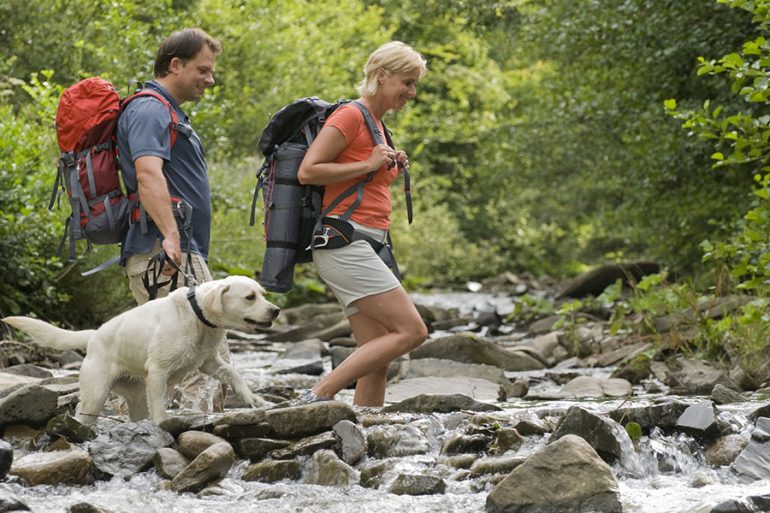Michael McDonald has always had a passion for getting outdoors and enjoying the beauty of our many hiking trails. A certified hike leader in Ontario, he often used social media as a means of sharing his love of walking in the woods. He noticed, however, that his most popular posts, the ones most widely shared and discussed, always dealt with the positive effects of hiking on alleviating depression. As someone who has watched friends and family members grapple with its sometimes devastating effects, McDonald decided to tackle the painful subject head on by writing about it.
About a year ago he wrote “Walking Away from Depression: A Guide to Fighting Depression with the Gentle Exercise of Walks.” It’s a 29-page guide that offers simple suggestions to help motivate people to get up, go outside and walk, written especially for those who might find it difficult due to mental illness. “I feel great when I walk,” McDonald says. “When I’m down, I like to walk, and physiologically good things happen when you hike. I wanted to share that with other people, to let them know that walking really helps elevate your mood.”

His guide briefly discusses depression and its symptoms, and although he stresses he is not an expert in this field, he does have personal experience. “Hiking is affordable for everyone,” says McDonald. “You don’t need a lot of money or special equipment. Just get out there and have fun.” It’s also a great outdoor activity for families, who may desire to disconnect from the busy digital world that engulfs all of us these days. “Kids especially can benefit from hiking,” he says. “Social media causes a lot of anxiety and depression in people of all ages, and Nature Deficit Disorder affects kids who aren’t outside as much, who don’t play outside, and are missing out on so much that nature has to give.”
As for McDonald’s guide, numerous readers have connected with the author, stating they wished they’d found it earlier in life. “It’s so rewarding to know it’s helped people,” he says. “One in five people suffer from mental illness, and although talking openly about it is still a stigma, it’s a stigma that’s going away and it’s so important to talk about it without judgment.”

While the entire book is full of helpful tips and positive methods and useful resources, perhaps the most poignant line regarding mental illness and the importance of reaching out to help or be helped can be found in his foreword: “Always remember, you are loved, and things will get better.”
Michael’s Favourite Trails
The Bruce Trail — Stretching along 890 km through southern and central Ontario, from the Niagara River to Tobermory, this renowned and very popular hiking trail boasts numerous waterfalls and side trails and a wide range of plants and wildlife.
Dundas Valley Conservation Area — Located in Hamilton and part of a large glacial valley, this 1,200-hectare conservation area features Carolinian forests, amazing geological formations, cold-water streams, rare plants, birds and wildlife.
Rattlesnake Point — Situated atop the Niagara escarpment, there are lots of activities to keep you occupied here, from geocaching to rock climbing, viewing the glorious autumn colours or watching turkey vultures soar above the cliffs.
Crawford Lake — This unique Iroquoian village includes recreated longhouses and a “bottomless” meromictic lake bordered by a stunning boardwalk perfect for hikers of all ages, and their pets. Festivals take place on a regular basis, including the popular Sweet Water Season in the spring.
Hamilton Harbour Waterfront Trail — This 3.4 km multi-use trail stretches along the shore from Bayfront Park to Princess Point, through the Desjardins Canal, and connects to the Trans Canada Trail, the Lake Ontario Waterfront Trail in Burlington and the Desjardins Canal bordering Cootes Paradise.
by Allison Dempsey
Local Links
Bruce Trail Conservancy
brucetrail.org
Michael McDonald
michaelmcdonald.ca







